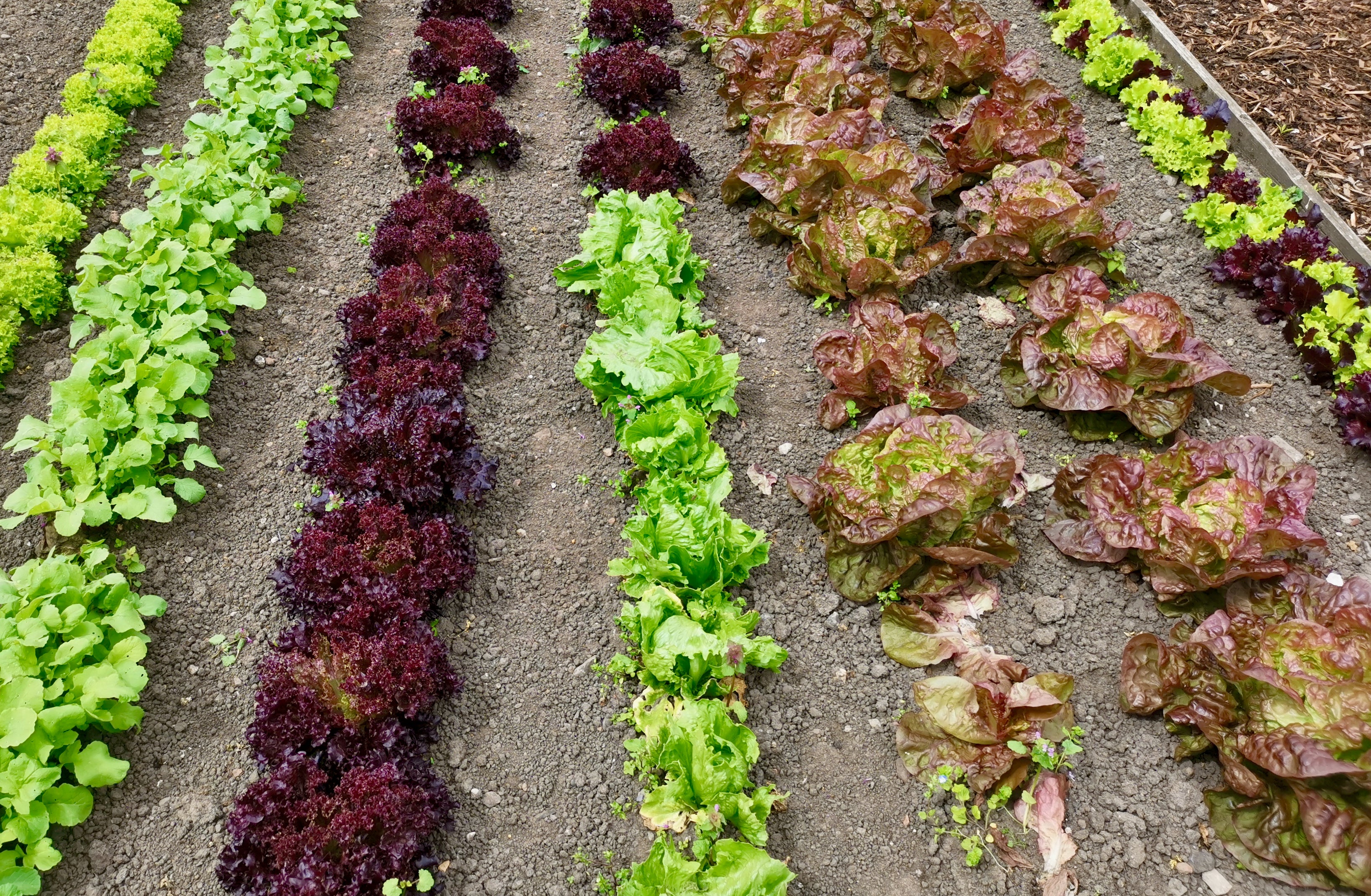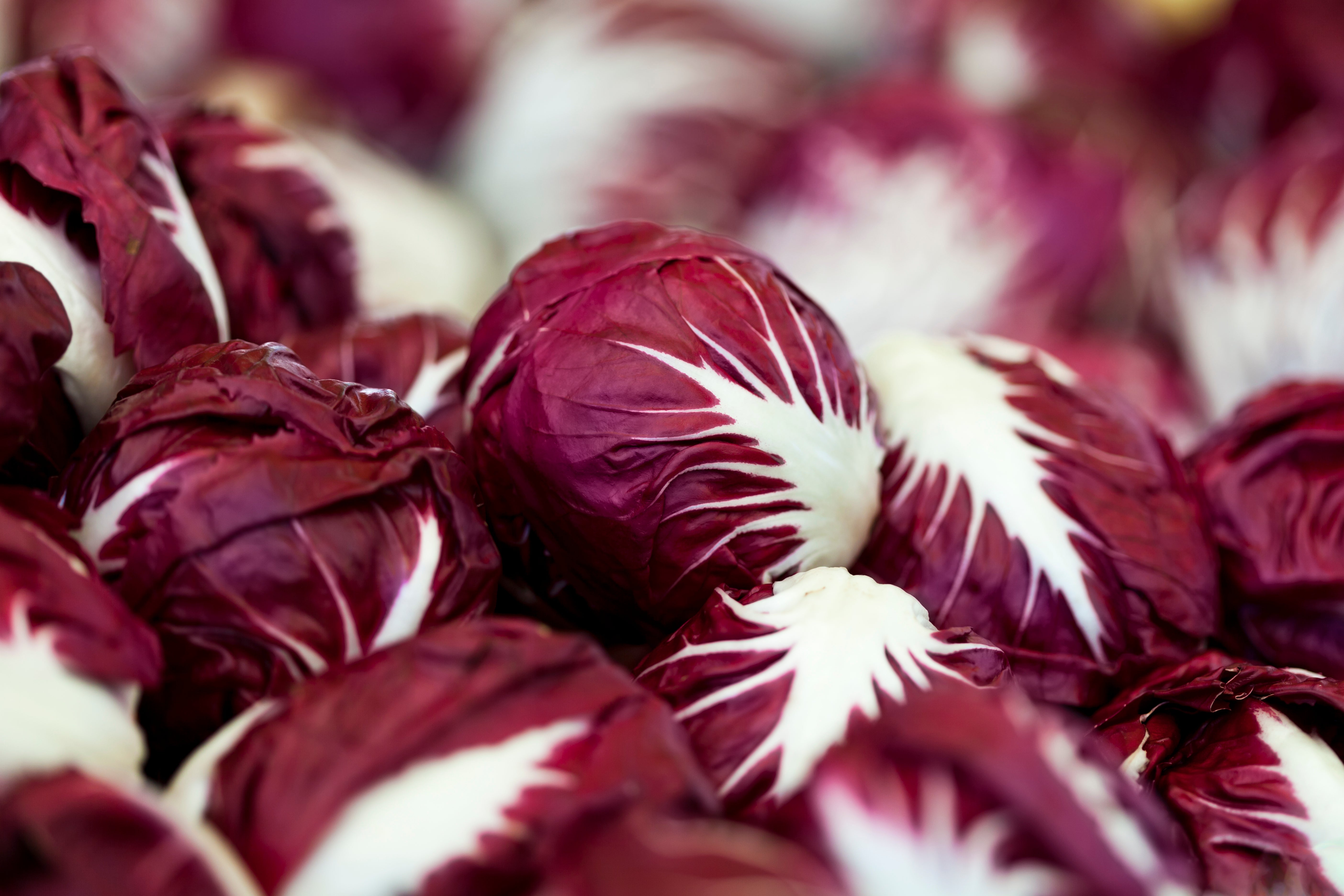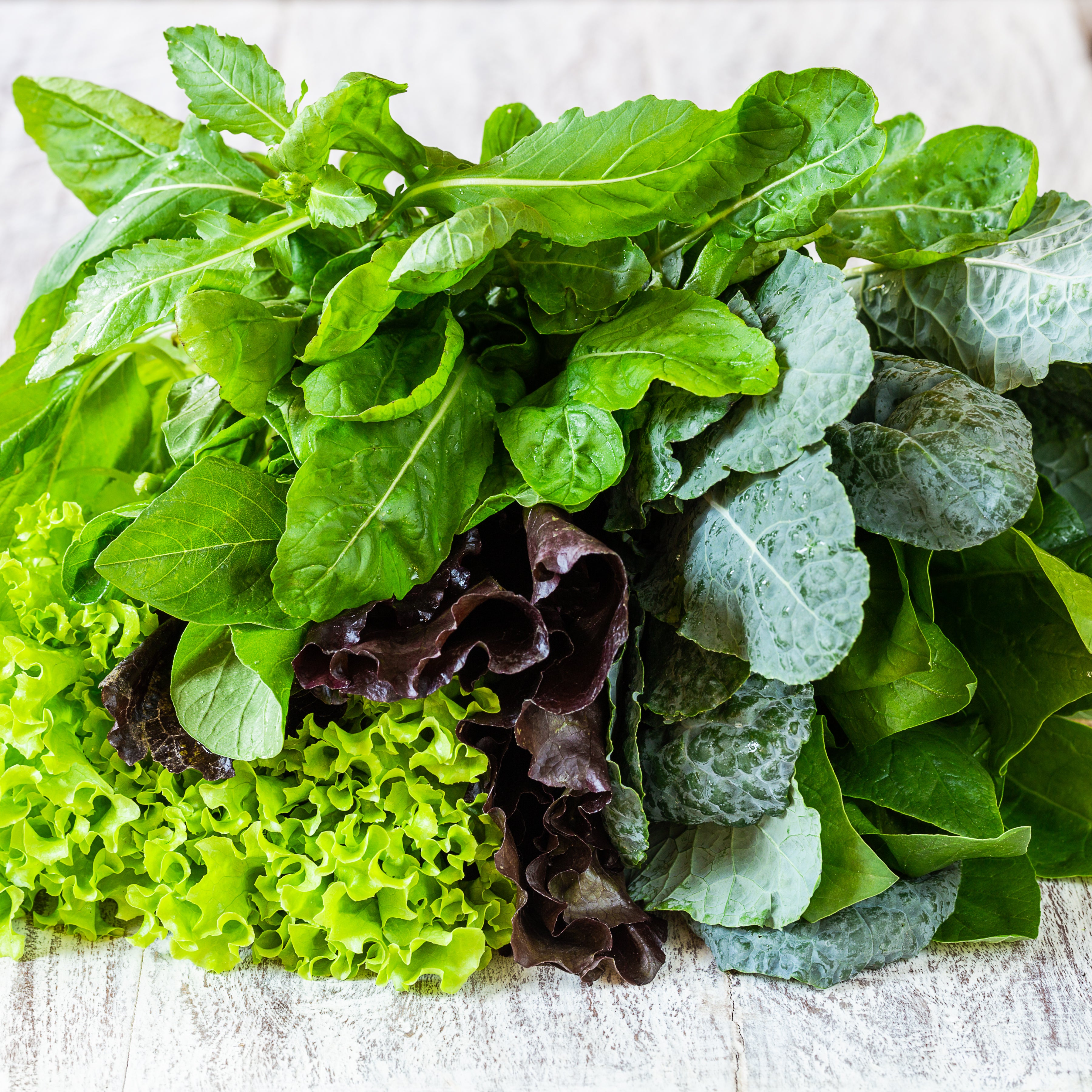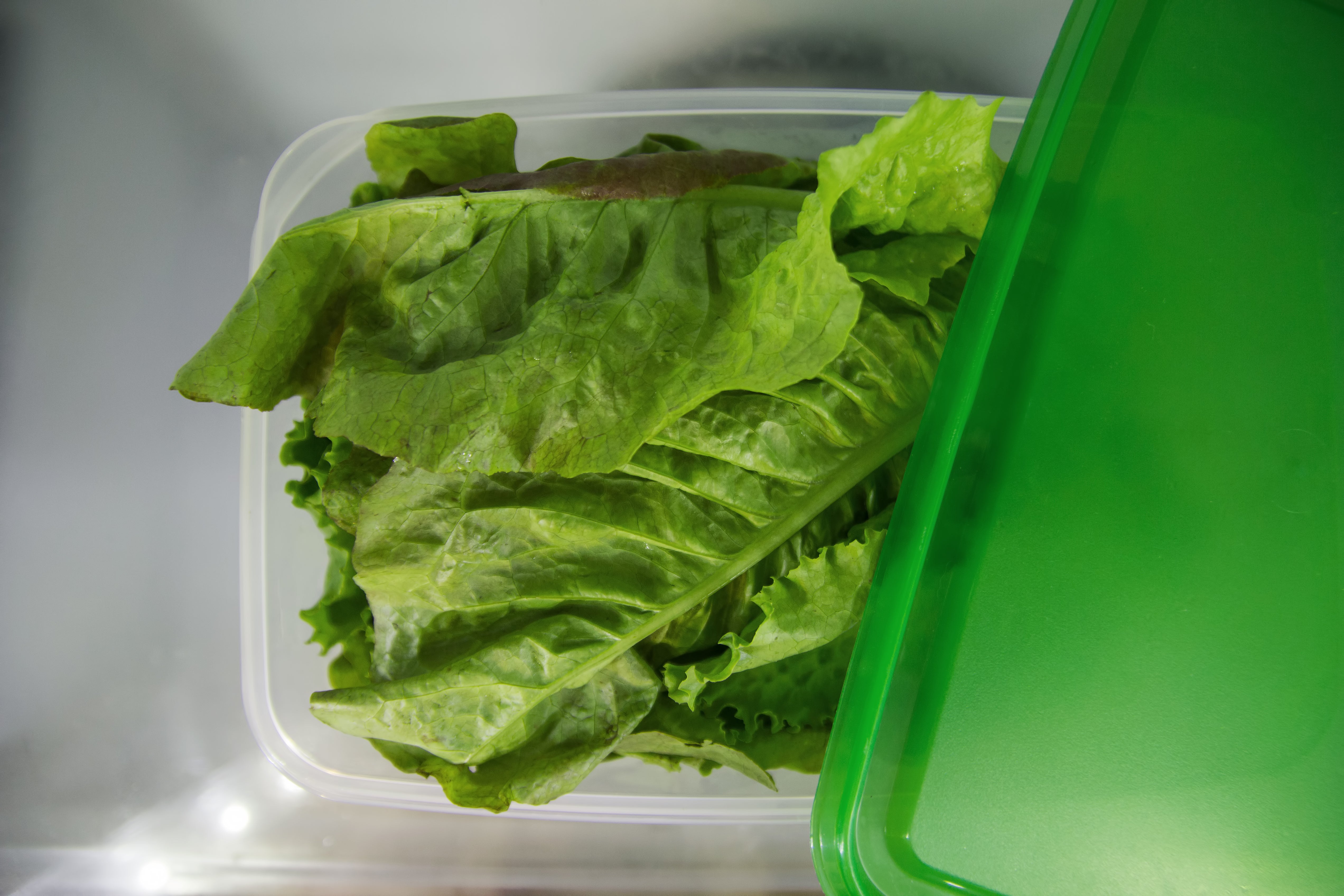
“Salad” is a pretty broad category of foods. It can be composed primarily of ingredients such as potatoes, eggs or chicken, but the first image that pops into my head is one with leafy greens – even though green isn’t the only colour these leaves can come in.
When choosing the right salad greens for your next bowl, the options are bountiful. The world of salad greens can be surprisingly complex and confusing, so here’s a breakdown of some of the more common types you’re likely to encounter along with how to best pick and store them.
Lettuce

Up until now, I thought that “lettuce” was just another synonym for salad greens. However, lettuce refers to a specific species of plants classified as Lactuca sativa (it’s a squares and rectangles situation where all lettuces are salad greens, but not the other way around). There are four, five or seven categories of lettuce, depending on who you ask, but for the purpose of salads there are only four that you need to worry about: butterhead, iceberg, romaine and loose-leaf.
Butterhead
“Head” in lettuce-speak refers to when the leaves overlap to a form a dense rosette or spherical structure. In this instance, the name says it all when it comes to describing the silky smooth texture of these leaves, which make it a salad favourite. Because of their delicate nature, butterheads are usually sold packed in plastic clamshells for protection. The most common types is round lettuce, which has a looser head and slightly softer leaves.
Iceberg
The most popular of this type, and perhaps most popular of all the greens on this list, is iceberg lettuce. It was created in the 1940s as a sturdy head of lettuce that would hold up well to shipping. Though it’s not the best source of nutrients, it does have a terrific crunch that’s hard to beat (a colleague called it “crunchy water” in passing the other day, which I find to be a spot-on description). Iceberg is the standard base for chopped and wedge salads, two classics in the pantheon of the category.
Romaine
This star of the Caesar salad is also known as cos. It has oblong leaves with sturdy, crunchy ribs and frilly edges. Its sturdiness means that it can also stand up to cooking, such as getting tossed on the grill for a quick char.
Loose-leaf
“Named as such because they do not have hearts and do not form tight heads, loose-leaf lettuces are clusters of individual leaves,” according to The Book of Greens by Jenn Louis with Kathleen Squires. They have soft leaves and come in a variety of colours, with some varieties – red leaf and green leaf – being named for their tint. Oak leaf, which also can be red or green, is another common variety that closely resembles red and green leaf lettuces. However, oak leaf’s leaves are slightly shorter and broader. Loose-leaf lettuces are generally mild, though red varieties tend to be more robust than green ones.
Mesclun
Also called “spring mix”, mesclun is a mix of soft and tender – often baby – greens. This term is “traditionally used for a spring mix of early greens harvested in the area around Nice, in southern France. Its meaning now includes autumn and winter fare, sown in late summer or early autumn for a continuous winter harvest,” Barbara Damrosch wrote in an gardening article. Components might include spinach, rocket, romaine, chard, curly endive, radicchio, kale, red leaf, green leaf and oak leaf. As such, its flavour varies depending on the exact blend.
Chicories

This group of leafy vegetables is named for their genus, Cichorium, and is known for a bitterness that can range from mild to assertive. Belgian endive and radicchio are the most common tightly headed chicories, and the loose-leaf varieties include frisée, curly endive and escarole. Unfortunately, there is quite a bit of confusion when it comes to naming.
For example: “What the US (and France) refers to as frisée is in turn called endive in the UK,” Danilo Alfaro wrote in The Spruce Eats. “Complicating matters even further is the fact that restaurant owners are always on the lookout for new ways to describe familiar ingredients to make them sound exotic because doing so means they can charge more. Thus, for years the word frisée supplanted the prosaic-sounding chicory on US menus. But as the pendulum inevitably swings the other way, and restaurants look to cater to patrons seeking a more rustic, ‘locavore’ experience than what the French-sounding frisée implies, the word chicory is finding its way back onto menus.”
As such, you may encounter other names for certain varieties (I’m looking at you, curly endive). Regardless of what they’re called, they’re all worthy additions to your salad greens lineup.
Radicchio
The most common radicchio is Chioggia, and it is a pleasing mix of bitter and sweet. Some might mistake it for small red cabbage, but it is much more bitter (one way to tell them apart is that the leaves of cabbage are more uniform in colour whereas radicchio will have white veins). Treviso is elongated, with a shape similar to romaine, and is less bitter than Chioggia. Another type you might encounter is Castelfranco, an heirloom variety with pale green leaves speckled with red. It’s much milder than the magenta-coloured radicchios.
Belgian endive
Shaped like little torpedoes, these chicories are known for having a juicy crunch. They can be either red or pale green, with the latter having a milder bitterness. In addition to salads, the leaves of Belgian endive make a great addition to a crudité platter as they are great for scooping dips and spreads.
Frisée
The word means “curly” in French, which makes sense when you see its frilly leaves. Part of the naming confusion comes from the fact that frisée is the same plant as curly endive (see below). “When curly endive is about three-fourths grown – about 30 days from seeding – the plant is covered and pressed and hidden from the sunlight: sometimes with boards, sometimes with cups,” Steve Albert wrote on the website Harvest to Table. Covering it keeps the majority of the leaves a creamy colour at the base and in the centre that transitions to pale green. The growing process also tames the bitterness compared to standard curly endive.
Curly endive
When grown out in the open to full maturity, curly endive takes the flavour of frisée and cranks it up a notch or two, making it more bitter while still maintaining a gentle sweetness. The leaves turn a darker shade of green and become a bit heartier, meaning that they can also withstand cooking. Curly endive is sometimes simply called “chicory”, further adding to the confusion.
Escarole
Compared to curly endive, escarole has nice broad leaves that are less frilly. “Dark green, leafy, and assertively bitter, escarole is an Italian favourite, appearing often in soups, as a companion to beans, or as a side dish,” The Book of Greens states. But of course, it can also be eaten raw, too.
Other common salad greens

Mustard greens
Curious as to how these nutrient dense greens taste? “Quite simply, mustard greens taste like mustard,” The Book of Greens states. “Some even like to say they are the wasabi of salad greens, as they have that certain sinus-clearing quality. Sharply flavoured with a lingering bite, mustards are one of the more versatile greens because they can be eaten raw, dried, and cooked in many fashions.” The mature greens, such as those in the photo above, have a thick rib that is best removed when eaten raw. If you want to eat the whole leaf, look for baby mustard greens, which come in a variety of shapes and shades. You might find them at a farmers market.
Kale
Unless you’ve been living under a rock, you’ve likely encountered at least a handful of kale salads on restaurant menus. Remove the sturdy rib and give mature leaves a nice massage to tenderise them (baby kale leaves can be eaten whole). Curly is the most common variety of kale, resplendent with emerald ruffles, but another you are likely to come across is lacinato – also called Tuscan or dinosaur kale – with dark, blue-green leaves.
Rocket
Also known as arugula, rocket’s tender leaves are known for its peppery bite. “This ubiquitous salad green may seem ordinary and common today, but in ancient Rome, where it was first cultivated, rocket was known as an aphrodisiac,” states The Book of Greens. “Indeed, it was believed so potent that it was often mixed with less powerful greens in order to temper longing, and it was forbidden to be grown in monasteries.”
Spinach
Like Popeye, I love this omnipresent green. “Native to Asia, likely Iran, it has flourished around the world for millennia,” says The Book of Greens. When it comes to salads, flat-leaf or baby spinach is the variety of choice as curly-leaf spinach can be tough and fibrous and is better suited for cooking.
Watercress
“One of the oldest documented greens, watercress dates back to ancient Greece, Rome, and Persia, where it was typically fed to soldiers to build their strength,” according to The Book of Greens. These leaves pack a peppery punch, but can have a fibrous stem, so consider removing part of it before adding to salads (or sandwiches).
This list is just the tip of the iceberg – pun intended – when it comes to the leaves you can use to make salads. Some others to consider include beet and dandelion greens, various cabbages and other brassicas, Swiss and rainbow chard, more niche restaurant favourites such as little gem, mâche and purslane, and that’s before we even get to all the different herbs! Assemble your salads however you please.
Selection and storage

It’s pretty obvious what you’re not looking for when it comes to salad greens: no wilting, significant discolouration or sliminess. Some bruising on the outer leaves of headed lettuces is OK as they act as a layer of protection (just remove a layer or two right before consuming). Lettuces such as iceberg and romaine also should have decent heft to them to account for the water content.
Your fridge’s crisper drawer is the best option for storing greens. Heads of lettuce should be placed in a plastic or reusable produce bag and will last longer if kept whole.
Leaves are best kept loosely packed in a hard-sided container – which protects them from getting damaged. If keeping for an extended time, line the storage container with dry paper towels or dish towels, then add the leaves on top, and layer with more towels and leaves, if storing a larger quantity (even for those plastic containers of prewashed greens, it’s a good idea to throw in a towel to help them keep longer). And if the towel ever gets particularly damp, swap it out for a dry one.
When it comes to washing your greens, a big bowl or other container of cold water is all you need. If washing headed lettuces, start by separating the leaves. Then submerge the leaves in the cold water, gently swish them around with your hand, let them sit for anywhere from a few seconds to a few minutes, and then lift them out, leaving any dirt, grit or – God forbid – bugs behind. If you notice that the water is particularly murky, dump the water and repeat this process until sufficiently clean.
Dry the greens well in a salad spinner or with towels, as wet greens won’t hold onto salad dressing as well.
It’s generally recommended that you wait to wash your greens until you plan to use them, as moisture is the enemy when it comes to storage. However, if you dry them really well and store them as recommended above, they should last at least a few days, making it easier to throw a salad together whenever the mood strikes.







